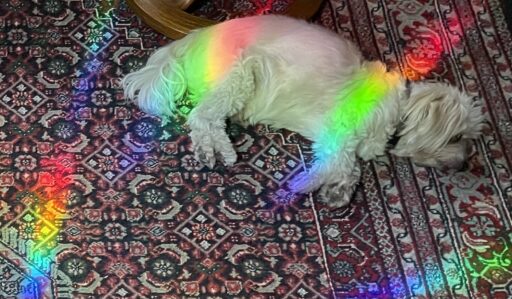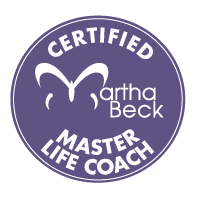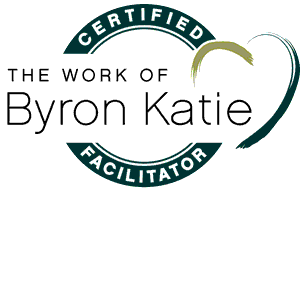
April, 2007.
I retrieve the local paper from the driveway. Page 1 is filled with accounts of a puppy mill raid. About ninety designer mutts in desperate need of foster families. The single-wide trailer where they procreated and fought and chewed through the floor to find food was now emptied, the owner awaiting trial for the second time.
It’s my first morning back from an intensive life coach training, and I’m definitely on the lookout for coincidences. The leader of the course, a famous writer, was known for something she called the Technology of Magic. She wrote Get a Dog! on the title page of my copy of her new book. This puppy mill coincidence seemed pretty magical, so I head down to the shelter, curious but not convinced.
I get there to find cages with various combinations of Maltese, Yorkie, Chihuahua, and Papillon mutts stacked into a very unstable doggie high rise that rose to the ceiling. It’s a frantic, chaotic scene. Some of the animals are starved skinny. All are barking.
I’ll just look for one that’s not barking, I thought. And there he was, poised at the entrance to a crate full of fuzzy mutts, sitting calmly and gazing around him like a Beanie Baby Buddha.
Then we found out he was only about eight weeks old. No problem, said my inner genius. He’s too young to be messed up by his surroundings, given some good training. And so we took him home to “foster,” (My family used air quotes too). Once there, I gave him a bit of water and kibble. His eyes lit up. “My person” could’ve been written in neon over my head in dog writing.
And that is how it was for the next 16 years. Within days he figured out that his main job was to be a therapy dog in the Oasis. And I’ve been accompanied by a little white shadow ever since. Forget about privacy. Doors not firmly shut would be likely nudged open by a nose during one of his ongoing sweeps of the house.
He was eye candy his entire life, from an irresistible puppy, to a stately, 15-pound senior. We called him Calvin for his cowlick hairdo, his wide-eyes and mischievous nature.
It didn’t take long after we got him before we discovered that his anxious attachment to me was becoming a problem. He occasionally nipped people who hugged me, so I stopped hugging my friends when I encountered them on the bike path outside our house.
Experts were called in. Training commenced, with spotty results. He nearly got himself killed in the dog park when he squared off against a German Shepherd. This was before he got his testicles out, but he held a grudge for pointy-ears his whole life. And that life ended naturally last month.
During his lifetime, Calvin must have nipped or bit at least ten people, most of whom were admiring what a cute little dog he was. Only two reported him. This earned him a tag labeling him dangerous. That tag is on his collar on the mantel now, right beside a hand carved box with his ashes and a snip of his soft white hair. And a beautiful memorial portrait on a Christmas ornament hand painted by his admirer, Liz-e. His hypervigilance is over, and he is at rest.
Being Calvin’s person taught me many lessons, but the biggest I think is this: Never underestimate the power of early childhood (or puppyhood) trauma. The neural pathways established in the very earliest stages of life never quite go away. But if we can meet the victims with something like the patience and devotion that our pet offers us, our hearts grow a bit wiser, kinder and more compassionate. And that compassion can extend even toward ourselves as our own hearts heal from life’s inevitable losses.

